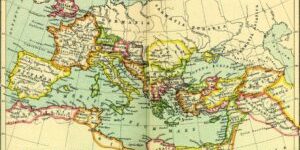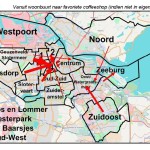Isabella Marie Weber – The Peculiarities Of China’s Economic Model
No Comments yet
Isabella Weber – PERI Research Associate and Research Leader in China Studies; Assistant Professor of Economics
This is part of PERI’s economist interview series, hosted by C.J. Polychroniou. The Series: https://www.peri.umass.edu/peri-economist-interview-series
Read Isabella Weber’s bio here.
C.J. Polychroniou: How did you get into economics?
Isabella Maria Weber: I got into economics through my interest in politics, in particular global questions. I realized that the political is inherently economic and the economic inherently political. If we want to understand how we can work towards positive change politically, we have to understand the material foundations of our society. If we want to make sense of the major shifts in our global political system, we have to understand the long-term economic dynamics. Coming from this angle, economics for me must take the form of political economy.
CJP: What do you consider to be the main issue in your research?
IMW: The broad question that motivates my research is how we can make sense of the major changes in the global economy that are unfolding in front of our eyes – at a dramatically accelerated pace since the COVID-19 pandemic. Since the Industrial Revolution in the late 18thcentury, we have lived in a world of a globalizing capitalist economic system, first under British than under U.S. hegemony. This phase is coming to a close with the gradual rise of China – not necessarily to one of dominance but to a more eye-level position. In my research, I pursue two related questions that aim to make a small contribution to this broad challenge: First, I have studied the intellectual foundations behind China’s economic reforms that set the country on the path of its current ascent. Second, I am leading a research project in which we examine the long-term evolution of global export patterns across the last and present era of globalization. The aim here is to understand path dependency and path defiance in the global division of labor. This theme grew out of earlier work on the US-China trade imbalance. In a third strand of my research, I have been investigating foundational questions of the nature of money and the driving forces of international trade for the purpose of placing my work on firmer theoretical grounds.
CJP: Why did you choose to specialize on the Chinese economy?
IMW: I am answering your questions as we watch the global economy collapse under the threat of COVID-19. There is no question that the political and economic power relations between the U.S. and China are changing. Many people in the U.S. and Europe alike are reacting to this uncertain dynamic with fear and, unfortunately, with increasingly racist, anti-Chinese sentiments. In order to work toward a peaceful navigation of the deep structural changes in the world economy, I believe that there is an urgent need for a better understanding of the logic of China’s political economy. Instead of measuring China’s system against the European or American experiences or some standard economics model, we need to study China’s path on its own grounds, while taking into account at the same time its global connectedness. I have specialized in the Chinese economy for the very purpose of making some kind of a contribution to this project.
CJP: How real is the so-called Chinese economic miracle?
IMW: The Oxford English Dictionary defines a “miracle” as a “marvelous event not ascribable to human power.” China’s economic development of the last four decades is certainly astonishing and as such marvelous. But it is by no means the result of some overnight wonder created by supernatural agency or luck. According to Maddison estimates of 2001, China accounted for about one third of the world’s GDP in 1850. Its share had fallen to below 5 percent in 1950, when China was one of the poorest countries in the world. Today China is responsible for about a fifth of the world’s GDP. These are rough measures, but the trend is obvious. China’s Communist revolution was about much higher aspirations than economic development. But it was clear from the beginning that industrialization and higher living standards were core requirements. Of course, China gave up long ago on Mao’s vision of revolution. But the pursuit of economic progress has continued across dramatically different political phases since 1949. China’s gradual return to a more prominent position in the world economy is not the result of a miracle, but of decades of hard work and heterodox economic policymaking. In a forthcoming book of mine, I argue that China’s economic leaders learned key lessons from the history of economic warfare in the 1930s and 1940s. At the heart of this strategy is the articulation of clear broad goals which are being pursued by flexibly utilizing prevailing economic dynamics and structures.
CJP: How did China manage to liberalize its economy while avoiding shock therapy, which is pretty much what happened in virtually all transition economies in Eastern Europe, Russia, and Latin America?
IMW: We often imagine of China’s gradual economic reforms as having been without an alternative. In fact, the 1980s marked a crossroads in the recent history of China and of global capitalism, as I show in my forthcoming book “How China Escaped Shock Therapy.” China too had very concrete plans for far-ranging overnight liberalizations. Had China implemented the policy of “shock therapy,” it would most likely have generated the same devastating results that we have observed elsewhere, but on a much larger scale. China would have mirrored Russia’s fall, but starting from a much lower level.
The basic premise of shock therapy is that all institutions of direct state control over the economy must be destroyed to make space for the market. Instead, China pursued a strategy of market creation that utilized the institutions of the planned economy. It kept the core of the planned industrial economy working, while transforming the old institutions into market players by first allowing for market activities on the margins. This strategy is manifested in the dual-track price system. Under this system, state-owned enterprises and farmers had to deliver the state-set quotas at a state-set price, but if they managed to produce more, they could market their surplus at market prices. In this way, China’s economy was gradually marketized under active bureaucratic guidance by reorienting its core economic institutions from the plan to the market. Non-essentials were liberalized first. Surpluses as well as sectors producing non-basic goods were non-essentials. They could be completely marketized without immediately endangering the stability of the whole system. Yet, the marketization of these non-essential areas unleashed a dynamic that fundamentally transformed the whole political economy, including its core.[1] As a result of this strategy, China kept much closer control over core sectors of the economy, such as energy, steel, finance and infrastructure. This has allowed China to respond in a fine-grained and targeted way to the 2008 global financial crisis, and to the current economic collapse in light of COVID-19.
CJP: Could/should the Chinese model be emulated by other developing countries?
IMW: China had a very different starting point from most other developing countries today. From a longue durée perspective, China could build on a very long history of bureaucratic market creation and participation. Tools derived from the statecraft of playing the market were utilized during the revolutionary struggles and again in the reform era. Considering the more immediate context, the Mao era had laid strong foundations for China’s take off in terms of education, literacy, public health and basic industrialization. Most developing countries do not have those preconditions. It would therefore not make sense to simply copy China’s model. But there is a deeper reason for not copying China’s model that emerges from China’s own experience. It is extremely important to realize that China, too, did not simply copy foreign models. Chinese researchers and officials, in collaboration with international partners, studied carefully the experience of various other countries and drew lessons for the country’s own specific situation, adapting the insights to its concrete conditions, often with major problems in the process. This approach of careful study of the prevailing local condition and adaptation of foreign experiences is what other developing countries can learn from China. But there is no panacea that works for all. The Beijing Model should not replace the Washington Consensus. The lesson is that there is no easy universal solution, no policy package that can fix it all.
CJP: What’s your view on Trump’s trade war with China? More generally, do you think the Chinese economy poses threats to the U.S. economy and other countries’ economies? If so, should they do anything about it?
IMW: I think that the trade war is an extremely dangerous policy. If any further proof was needed – and I don’t think there is, COVID-19 is demonstrating in a morbid fashion just how closely integrated the world is with China, and vice versa. In the 1980s China retreated from its revolutionary ambitions and embarked on a path of reform using its state capacity to reintegrate into the global market. Since the 1990s, we have been living through a second peak of globalization in modern times. The last globalization ended with the First World War. The present one is collapsing as I am writing. In such a situation, we need international collaboration, not war of any kind. I don’t think the Chinese economy, taken by itself, poses a threat to the U.S. or to other countries. Crises of this historical moment don’t have a nationality; they lie in the nature of the global system. The real threat results from the exploitation of this crisis by nationalists and racists. To confront this threat, we have to improve our understanding of China, instead of feeding into scapegoat narratives.
Reference:
[1] I spell this out in greater detail in this interview: https://www.peri.umass.edu/economists/isabella/item/1206-the-making-of-china-s-economic-reforms
You May Also Like
Comments
Leave a Reply








